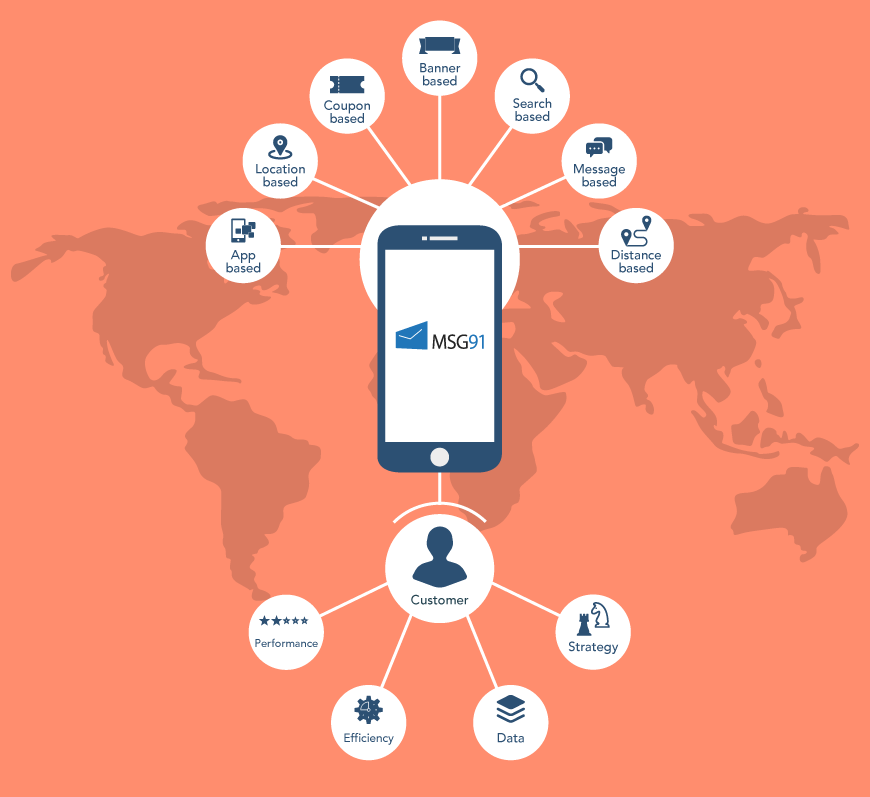Part I- No One Ignores This Engagement Medium- Mobile Messaging
Engaging audiences through mobiles, smartphones, tablets, smartwatches and other wearables, most companies now recognize the importance of mobile messaging to deliver a positive brand experience.
Besides allowing businesses to connect with their customers, mobile messaging supports business goals including audience expansion, revenue, communicate business information, build valuable customer relationship and more.

We comprehend that you fully understand the importance of going mobile, but do you know what channels to use, how to boost engagement or even where to use which channel?
Mobile messaging as we all know has become one powerful engagement medium, but the engagement is only fruitful when it brings result and to bring successful results here’s the first one of our three-series part to guide you towards successful mobile marketing.
For a further understanding of how to leverage this powerful medium, mobile messaging can be divided into 3 major categories.
-
CHANNELS WITHIN MOBILE APP
- Push Notifications
- In-App Message
- In-App Message Center
By including these three distinct message capabilities in your messaging strategy you can create a compelling experience for your app users.
Push Notifications
Delivered to a mobile phone’s lock screen, Push Notifications are quickly becoming an acceptable opt-in communication channel. Ideal for time-sensitive information targeted Push Notifications that include segment attributes are able to achieve greater mobile app engagement.
For even greater mobile app engagement Push Notifications are being further used as
- Rich Notifications – Include pictures, videos, GIFs and audios
- Interactive Notifications – Enable users to interact and engage at a deeper level
In-App Messaging
With no opt-in process, these messages allow you to reach a majority of your audience. Perfect for delivering messages regarding feature updates, app-related tasks or service reminders and more.
In-App Message Center
The best way to reach all your app users, it drives people back to your app. It allows you to send offers related to promotions and other content to your audience without stopping users in their track.
-
NATIVE MOBILE CHANNELS
- SMS
- Wearable Device Notification
- Mobile Wallets
By including these three distinct message capabilities in your messaging strategy you can create a compelling experience for your customers.
SMS
Short Message Service, popularly known as text messaging is the most used and accepted medium of mobile communication. With a 98% open-rate and 90 seconds as the average response time, SMS has become the first choice of businesses for mobile engagement.
Employed across all industries, typical use cases for SMS mobile engagement include transactions, billing, shipping, OTP, special offers, promotions, confirming appointments and overall relationship-building.
Wearable Device Notification
Relevant and immediately actionable messages work well with wearable marketing as they are delivered and read instantly. Wearable devices such as smartwatches are integrated into a user’s device ecosystem and the notification delivered to it serves as an individual as well as integrated experience.
Mobile Wallets
Mobile or digital wallets as they are called makes for effective mobile wallet marketing as these wallets can be easily created, managed and updated. The native app of a mobile wallet is always downloaded on the mobile phone of the user making it easy to communicate and further increase mobile engagement.
-
WEB ENGAGEMENT CHANNELS
- In-Browser Messages
- Social Media Platforms
- Mobile Email
By including these three distinct message capabilities in your messaging strategy you can create a compelling experience for your audience at large.
In-Browser Messages
Mobile web search is typically the first way a potential customer finds about your website and it is through web notifications via web browsers that you can send a message to users who then opt-in to your website.
Social Media Platforms
Over 80% of the mobile time of an average user is spent on apps, a big part of it on social apps. An effective and low-cost way to connect with customers, social media platforms such as Facebook, Instagram, Twitter, Snapchat, Pinterest and more make for a great customer-relation opportunity.
Mobile Email
Best used to communicate long-form information, the average person spends 6.3 hours a day checking emails and mobile devices account for 64.5% of all email opens. Struggling for user’s attention, the user engagement opportunities with email is getting limited by the day.
These three categories of mobile messaging can be best used to increase brand engagement with audiences, but the engagement might only gain traction when the right channel is used at the right time.
Want to know which channel would work best for your industry? The second part of the three-series mobile messaging would bare it.
And, then the third and final to get you started with your integrated marketing communication strategy.
Will keep you posted…
Till then, happy messaging 🙂
Views: 251
- customer-experience
Copyright 2008-2025, Superheroes, Inc. | All rights reserved.